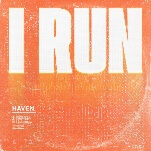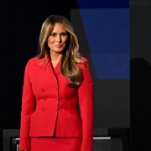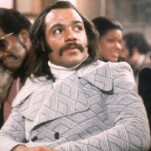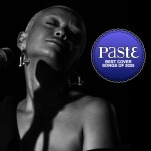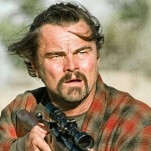Nanjing proves its worth by exploring history
In the past few years more creators and publishers have seen the relatively untapped potential of comics when it comes to historical storytelling, be it the lighthearted if piercing style of Kate Beaton’s Hark! A Vagrant or more serious and studious works like Gene Luen Yang’s remarkable Boxers & Saints. This is nothing new, of course—Maus and Persepolis are two well-known older examples—but the last decade in particular has seen a boom in history told through comics, and the medium has grown stronger for it.
It would be easy to lump Nanjing: The Burning City (Dark Horse) with Boxers & Saints. But the latter was an exploration of what most history books call the Boxer Rebellion, which spanned the turn of the last century, while the former tells the story of the Second Sino-Japanese War, often overshadowed by the rest of World War II. There are certainly similarities between the two books, given that the events they discuss are irrevocably tied, but writer and artist Ethan Young has a very different style that sets this book apart in the best ways. One of the chief challenges Young faces is that, as he works in grayscale and many of the characters on the page are wearing uniforms, it can be difficult to distinguish between them easily. But Young has a strong grasp on how to amplify realistic facial features to make them more distinct, and the sketchbook page in the back show off that process beautifully. Nanjing is lush with detail, every inch of most panels filled with characters and context. It’s also darker in both tone and appearance than Boxers & Saints: Yang has a cartoonish style with pops of color, whereas Young’s work features large swaths of heavy black, nearly oppressive hatching, and detailed, realistic backgrounds. It makes events feel tight and frantic, perfect for a fast-paced story with immensely high risks. There are panels that feel like carefully constructed camera shots, with interesting angles and intense close ups that only heighten the danger the characters find them in. Here, and with some interesting lettering for sound effects, Young is stepping up his game, relying on the familiar panel layouts he used in his excellent webcomic Tails but pushing himself in other ways to tell a fascinating and important story.
Here’s where Nanjing outstrips a lot of other historical comics. Through his art and the storytelling choices he’s made, Young draws readers into a deeply intimate comic that’s a microcosm for much broader violence. The main characters are sympathetic not only as people but also in the situation they find themselves in. References to “safety zones” and desperate attempts to keep innocent people safe feel particularly heavy with recent headlines about refugees, and while the book may be about Nanjing in particular, Young’s skill transcends the story into something much larger. It’s certainly not an easy read, but that’s to be expected for a depiction of an event that’s been chronicled elsewhere as The Rape Of Nanking. The book provides enough cultural and historical context to not only further amplify the tension but also educate readers, and does so without feeling reproachful or sententious. It is a retelling of truths often forgotten, and that’s not only worth applauding—it’s important to share. Nanjing: The Burning City deserves a spot alongside not only historical comics, but wartime prose and non-fiction as well. It’s not often that an author can so skillfully evoke powerful emotion while telling a complex and long-forgotten story and this book is a excellent, necessary addition to the genre. [Caitlin Rosberg]
Katie Skelly’s Agent 9 (self-published) is chiastic. The comic, a collection of erotic shorts that had previously appeared on Slutist.com, opens and closes on pages that mirror each other, with the titular Agent 9 posing for a fashion shoot. Agent 9 is not the same on both pages, though, and she has, in the course of the story, been transformed by a cavernous creature that recalls the sex machines of Roger Vadim’s Barbarella.
Sex plays a considerable role in the story of Agent 9, and her episodes function largely as a vehicle for Skelly to render erotic images—masturbation is a recurrent occurrence in the brief comic. However, Skelly never portrays sex or sexuality as simply a physical act. There is a sensuality to her images, but there is also a transcendent spirituality. Masturbation isn’t something Agent 9 does simply to do it; she does it to fulfill some other need—to dominate, to excite something in others, and, in one instance, to transform herself into someone else entirely. There is very little narrative in Agent 9, and Skelly focuses more on these little moments of sexual playfulness, and she shapes the atmosphere of the work around them. Her bubbly, rounded lettering feels dynamic and elusive—there is a raw, quivering movement to it, a vitality—and her linework balances a cartoonish aesthetic with a deep sensuality.
Blending the elongated limbs of Guido Crepax and bulbous bodies of Guy Peellaert, Skelly’s aesthetic is singularly her own. However, there is utility in her style, and her comics don’t simply look good. She uses her paradoxical aesthetic—both heavily cartooned and broadly erotic—to affect her audience precisely how she wants to. Her characters look at one another with almond-shaped eyes, with pupils dilated to look like saucers, and their lips curl seductively. Her characters have the same kind of cool as Jean-Luc Godard characters, and they make you forget that you don’t know anything about them. Skelly frames her work like a spread in Vogue (Agent 9 is even printed at the size of most fashion magazines), and she does this with her composition, with her layouts, and with the way she poses her characters. She also achieves this affect with her jarring, candy-coated colors, which recall the flat opacities of mid-century Franco-Belgian comics like Tintin and Jodelle; she uses these colors to cultivate a mood, to approximate psychedelic vibrations of energy, and to lend her figures a convincing weight. The color is also used to emphasize beats and moments, to communicate intonations and emotions, something she prioritizes over articulable or narrative information.























